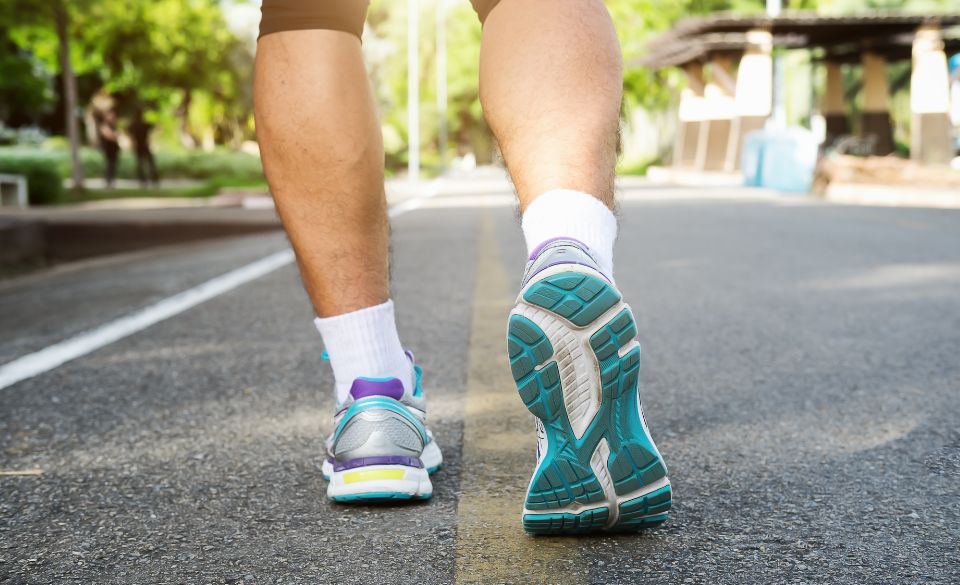
Blister Treatment & Prevention Guide For Runners
Page Contents
Blisters, the most commonly reported running injury, can make or break your day on the road, trail, or during a race. It’s essential for road runners, trail runners, and even hikers to know how to care for their feet. Whether you’re gearing up for an running race or a casual jog on the trails, proper foot care can be the difference between an enjoyable experience and discomfort.
Relying solely on race volunteers or medical staff to tend to your feet during a race assumes they know your feet’s specific needs and how to handle blisters. Just as you put in the miles to train your legs, it’s crucial to learn how to care for your most important asset: your feet.
In this article, we’ll share their advice on preventing blisters, foot care during your outdoor adventures, and post-race or post-hike treatment.
Understanding the Causes
Blisters typically form due to friction on the skin’s surface. This friction can result from clothing, footwear, or sports equipment rubbing against the outer layer of the skin, exacerbated by warm and moist conditions. Over time, continuous friction can cause the top layer of skin (the epidermis) to separate from the underlying layer (the dermis). This separation leads to the accumulation of fluid and the formation of a blister.
In most cases, the fluid in blisters is sterile and harmless. However, if a blister becomes infected, it may fill with pus, or if it results from trauma, it could contain blood. Blisters are a natural protective response; they cause pain to deter further injury and create a cushion with the fluid. But often, we need to soldier on, necessitating proper treatment.
Prevention is the Key
When it comes to dealing with blisters, the best approach is to avoid them altogether. Preventing blisters means minimizing friction on your skin, and there are several effective strategies to achieve this:
1. Daily Foot Inspection: Make it a habit to inspect your feet daily, looking out for any “hot spots” or areas prone to irritation. If you detect these hot spots during your activities, immediate treatment is crucial to prevent blisters from forming. Compeed offers a range of products designed to protect and soothe your feet. They offer specialized plasters for various parts of your foot, making it convenient to carry some with you for on-the-spot treatment of hot spots or emerging blisters during your run.
2. “Break In” Your Footwear: Avoid racing in brand-new shoes that haven’t been worn previously. Competing in untested footwear is a sure path to blisters. Ensure that your shoes fit correctly to minimize excessive movement and accommodate any potential swelling during a race.
3. Moisture-Wicking Socks: Opt for moisture-wicking socks to reduce friction and moisture on your feet’s skin. Toe socks like Injinji provide an extra layer of protection for your toes and offer superior moisture management compared to regular socks. Drymax is another brand to consider; they specialize in designing socks to keep your feet as dry as possible while running. With features to prevent dirt from entering your socks and flat toe seams, they’re a popular choice among runners.
4. Use Lubricants: Applying a lubricant daily can significantly reduce friction and moisture that contribute to skin breakdown. Bodyglide, for instance, is an easy-to-apply balm that’s resistant to perspiration and water. These products are formulated to withstand various conditions, whether it’s heat, humidity, or cold. They help keep your skin lubricated, prevent hotspots, and can last for hours, making a substantial difference in preventing blisters, especially on race day.
5. Tape Your Feet: Consider taping your feet or toes as an extra preventive measure. Using thin paper tape like hydropore around each toe can provide protection for days. However, avoid taping between your toes, as this could cause friction. For more robust taping, options like moleskin and Elasticon, applied along the base of your foot or heel, can be quite helpful.
Advice on Managing Blisters
In the unfortunate event that you do develop a blister, your primary objectives should be to prevent it from worsening and avoid infection. There are several treatment options to consider:
Let Small Unbroken Blisters Heal: If you have small blisters that haven’t broken open and aren’t causing discomfort, it’s best to allow them to heal naturally. Your skin provides an excellent defense against infection.
Use Tape or Moleskin for Early or Small Blisters: To alleviate the effects of early or minor blisters, or significant hot spots, you can add a layer of tape over the affected area or use a donut-shaped piece of moleskin to reduce local pressure.
Drain Large, Painful Blisters: In the case of larger, painful blisters that aren’t bloody, you may need to drain them while preserving the top layer of skin. To do this safely, follow these steps:
1. Clean the blister and the surrounding area with rubbing alcohol or antibiotic soap and water.
2. Sterilize a needle by heating it over a flame until the tip glows red, and then allow it to cool.
3. Puncture a very small hole at the base edge of the blister and gently drain the fluid by applying slight pressure.
4. Once drained, cover the blister with a bandage. If you suspect it might be infected, consider using an antibiotic ointment.
5. Seek medical attention if you notice progressive redness or foul-smelling discharge from the blister.
6. Our Top Tips for Preventing and Managing Blisters Before, During, and After a Trail Race:
Before the Race:
Reduce Calluses: Prior to the race, focus on reducing calluses on your feet. Soft skin is less likely to develop blisters compared to skin with hard calluses. Common callus areas are under toes, on the heels, and on the bottom and side of the forefoot. Blisters beneath calluses can be extremely painful and challenging to drain. Use a callus file and lotion to manage callus buildup.
Learn How to Treat Blisters: Acquire the skills to treat blisters and tape your feet before hitting the trails.
During the Race:
Select Moisture-Reducing Socks: Opt for socks specifically designed to minimize moisture around your feet. In sandy conditions, avoid double-layer socks, as sand can accumulate between the layers.
Carry a Blister Kit: Be equipped with a small blister kit like The Rough Country Essential Blister Kit. This kit includes all the necessary items and is conveniently stored in a plastic Zip-Lock bag, ensuring it stays dry and easy to access during your race. It also comes with a step-by-step instruction guide for foot care during the race.
After the Race:
Post-Race Foot Care: If you’re participating in another race the following day, be sure to air your feet, inspect and treat any hot spots or blisters, and clean your shoes.
Epsom Salt Soak: If the race has concluded, consider soaking your feet up to four times a day in warm water with Epsom salts. The salts help dry out the skin, expediting the healing of blisters.
Many runners and athletes sometimes overlook the importance of preparing their feet for competition. Whether you’re vying for victory in an endurance running race or simply enjoying a day running on the trails with friends, don’t underestimate the significance of caring for your most valuable asset: your feet!
Final Words – Blister Treatment & Prevention Guide For Runners
In conclusion, blisters, one of the most common running injuries, can have a significant impact on your outdoor experiences, whether you’re on the road, trail, or in the midst of a race. Proper foot care is essential for road runners, trail enthusiasts, and hikers, whether you’re preparing for an endurance race or a leisurely day in the great outdoors.
Relying solely on race volunteers or medical staff to tend to your feet during a race is a gamble. After all, they might not understand your feet’s specific needs or how to handle blisters. Just as you diligently log miles to train your legs, it’s crucial to learn how to care for your most vital asset: your feet.
Throughout this article, we’ve explored the causes of blisters, effective prevention strategies, and steps to manage blisters if they do occur. The key to blister management is prevention, which involves minimizing friction on your skin through various strategies.
Remember to inspect your feet regularly, break in your footwear, choose moisture-wicking socks, utilize lubricants, and consider taping your feet as a preventive measure. If a blister does appear, understand when to let it heal naturally, how to use tape or moleskin for early blisters, and how to properly drain larger, painful blisters while preserving the skin.
Preparation is essential for a successful race or day on the trails. Reducing calluses, learning blister treatment techniques, and selecting the right gear can make a world of difference. After the race, ensure proper foot care and recovery by airing your feet, treating any hot spots or blisters, and cleaning your shoes. Consider an Epsom salt soak to expedite the healing process.
Your feet are your most valuable asset during outdoor activities, so don’t underestimate the importance of caring for them. With the right knowledge and preparation, you can ensure that blisters don’t stand in the way of your outdoor adventures.


